From $100K Inventory Lockdown to a $1M Amazon Exit
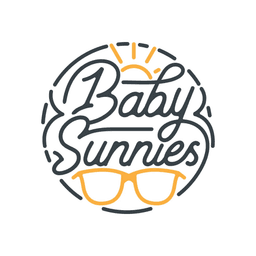

Business Description
Table of Contents
Navigate through the case study sections
Executive Summary
Case Study Content
Introduction
In February 2021, Marwan Barakat launched Baby Sunnies with a clear plan. No brand story or long product roadmap, just a specific improvement on a high-volume item. He took a basic pair of baby sunglasses, added polarized lenses (instead of standard UV400), wrapped them in premium packaging, and listed them on Amazon. That was it. Within weeks, his product was ranking top of page one. Monthly revenue passed $100K, powered almost entirely by Amazon PPC. No external traffic. No email campaigns. Just a fast launch with a product that looked and felt better than its price.
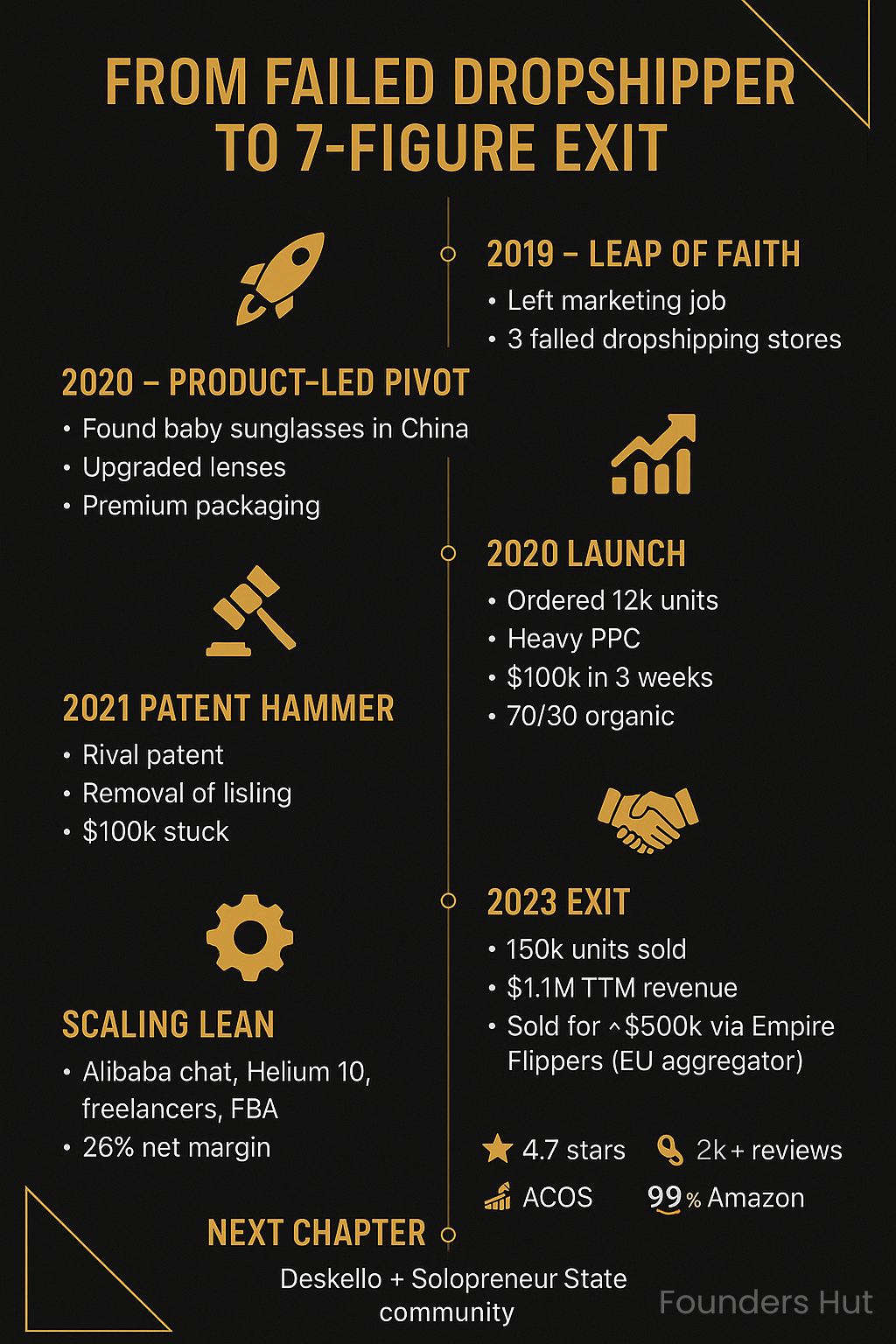
Background
Marwan left his digital marketing role in 2019 and didn’t have a set plan. Like a lot of people, he cycled through a few ideas. Dropshipping first, low margins, limited defensibility, heavy churn. Then a small sourcing agency based in China. That work gave him hands-on exposure to factory networks and shipping logistics. But more importantly, it showed him how forgettable most eCommerce products really are. Same factories. Same templates. Everyone trying to “scale” before they even had something different. That’s what made him stop trying to be clever and start thinking simple: one good product, made better, and launched right.
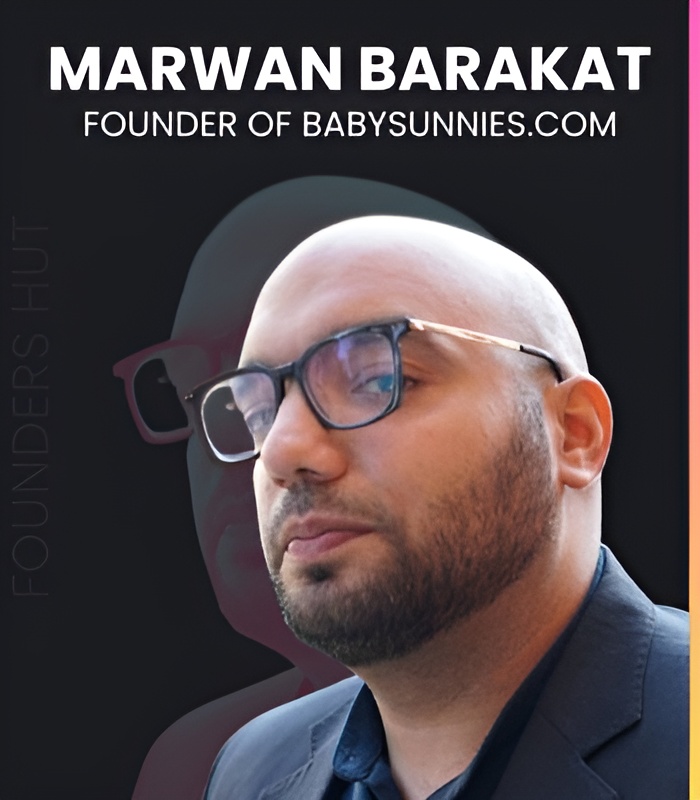
Product Design & Sourcing
Living in China gave Marwan direct access to manufacturers. No agents. No delays. He visited factories in person and sourced a sunglass frame that already had demand. He wasn’t trying to reinvent it, just improve it. He upgraded the lenses to polarized (more expensive but visually superior), adjusted the fit for infants, and swapped the usual generic polybags with structured gift-style packaging. Even the box had thought put into it. It opened properly, held its shape, and looked like something you’d want to give at a baby shower. These weren’t major changes on paper, but the combined effect made the product look 3–4x more expensive than competing listings.
Marketing & Growth
The launch strategy was Amazon-only. No website. No Instagram. Just two parent ASINs with ten color variations and 12,000 units ordered upfront. All ad spend went into PPC. It wasn’t cheap, but it was calculated. He structured campaigns tightly, targeting only relevant phrases, then ramped up gradually. Within days, he secured bestseller tags in his category. Sales velocity improved, and reviews started coming in at a healthy clip. Once the product had enough organic support, he began dialing PPC down. The ratio stabilized at around 30% paid, 70% organic. That meant fewer bids, less stress, and more room to reinvest into inventory instead of constant top-of-funnel spending.
Patent Shutdown & Creative Pivot
In August 2021, everything paused. A competitor held a design patent on a similar frame and filed a complaint. Amazon, following standard procedure, removed multiple listings, including Marwan’s. He suddenly had over $100K worth of unsellable stock sitting at a 3PL. Legal options existed, but they were slow, expensive, and could easily drag on for a year with no clear outcome. Instead of wasting time or complaining, he found a workaround. Marwan sourced a new adjustable strap design from a supplier he knew. He shipped the straps to the U.S. warehouse, reworked the inventory with the help of his 3PL, and created a new listing with a fresh visual angle. Functionally, it was nearly the same product, but different enough to relist and avoid takedowns. He even filed his own patent on the updated strap to avoid running into the same issue twice.
Relaunch & Scaling
By December 2021, Baby Sunnies was back up. The new SKU looked familiar to repeat buyers, but different enough to pass Amazon’s filters. Same playbook: PPC-first push, followed by review collection and controlled budget pullback. This time, things moved faster. Maybe it was the head start from the earlier success, maybe the revised strap helped conversions, maybe both. Regardless, the relaunch outperformed the original. Sales volume increased, margins improved slightly due to better supplier terms, and customer retention started showing up in backend data. By the end of 2021, the brand had crossed $1.1 million in gross revenue without a full-time team, without a DTC website, and without relying on discounts or promotions to move stock.
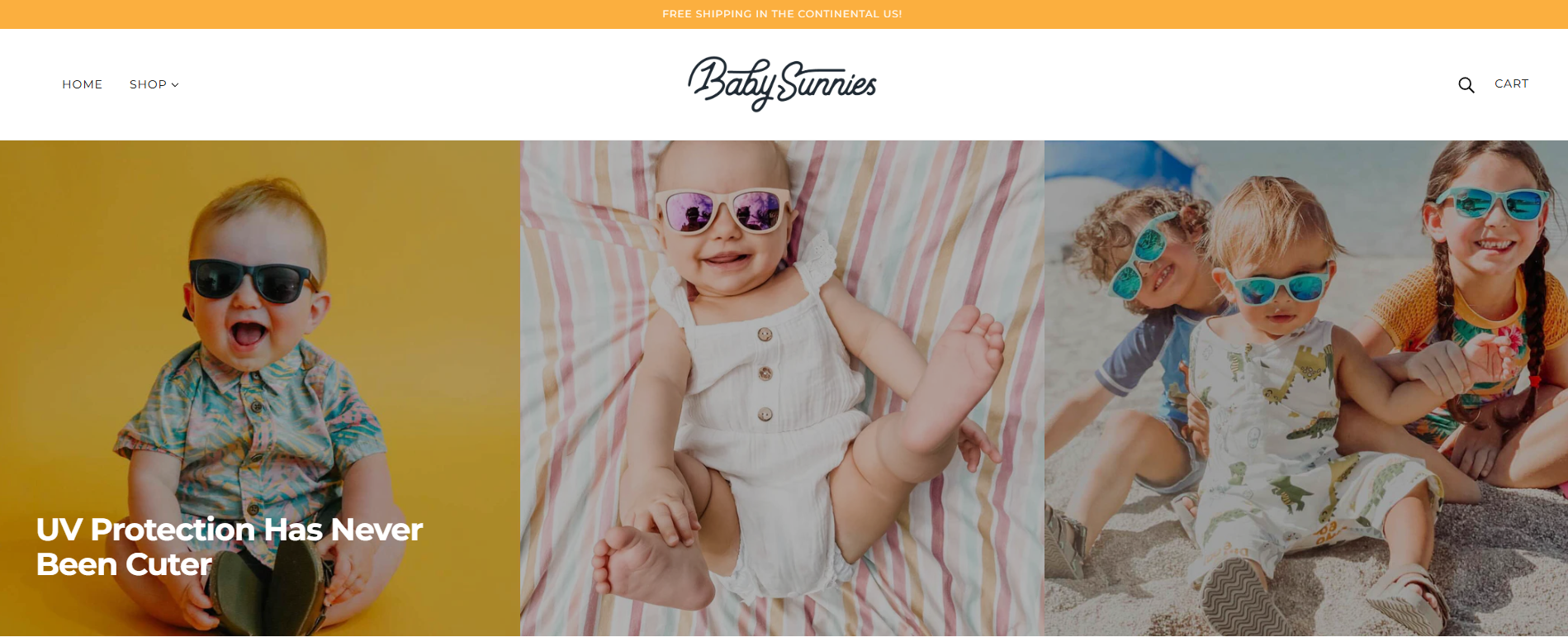
Exit Strategy
After running Baby Sunnies for nearly two years, Marwan decided it was time to exit. He fielded inbound offers from brokers and acquirers but chose to list through Empire Flippers, which made the process more structured. Within three months, the brand was sold for just under $500,000. It wasn’t a VC-style exit, but it was a clean win, half a million in cash, no earn-outs, no founder handcuffs. The deal gave him financial breathing room and cleared mental space to move onto something else. That “something else” became Deskello, a product line built for remote workers. Same approach, different market. Start simple. Launch fast. Iterate if needed.
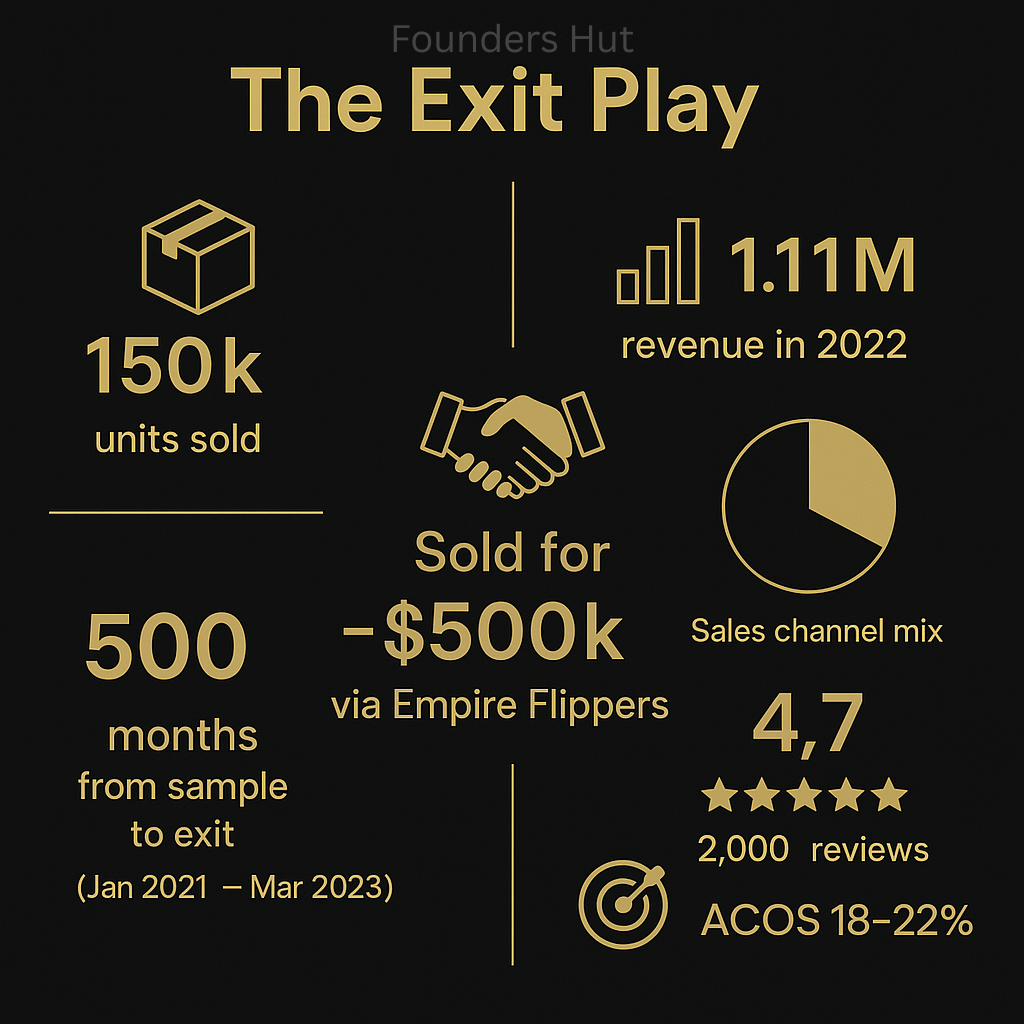
Key Lessons
- Don’t chase originality when improvements will do. Upgrading parts of an existing item can outperform a brand-new concept.
- Amazon PPC is not about profitability in month one, it’s a tool to earn rank, fast. Pay for rank, then profit later.
- Product bans happen. Don’t waste time fighting if there’s a cleaner workaround. Speed > pride.
- Packaging matters more than most sellers think. People do judge books by covers, especially on Amazon.
- Get clean books and simple ops early. That makes exiting easier when the time comes, no messy assets, no unclear numbers.
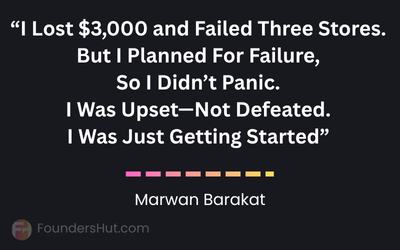
Business Plan
Market Problem
The market for baby sunglasses is saturated with low-quality options that fail to meet safety and aesthetic standards. Parents are looking…
See the full market problemSolution
Baby Sunnies addresses these challenges by offering a high-quality product with polarized lenses and premium packaging at an accessible…
See the full solutionTarget Market
Parents
Seeking stylish, affordable sunglasses that protect their children's eyes while looking good.
Gift Buyers
Looking for unique, high-quality gifts for baby showers and newborns.
Competitors
Baby Banz
Known for their UV protective sunglasses, but often criticized for lack of style.
Babiators
Offers a similar product but at a higher price point with a focus on durability.
Competitive Advantage
Baby Sunnies stands out through its commitment to quality and design. By using polarized lenses and offering structured gift-style…
See the full competitive advantageSales and Marketing
Baby Sunnies primarily utilized Amazon as its sales channel, focusing on PPC advertising to drive initial sales. The strategy involved…
See the full Sales and marketing planSuccess Milestones
Launch Product
Introduce Baby Sunnies on Amazon with two parent ASINs and ten color variations.
Hit $100K Revenue
Achieve monthly sales of $100K through targeted Amazon PPC campaigns.
Key Takeaways
- 1Differentiate by upgrading core features and unboxing experience to command higher prices and stand out.
- 2Launch aggressively with targeted PPC to secure best-seller status, then rebalance toward organic traffic for profit.
- 3Monitor patents and design filings in your niche; have contingency plans to adapt fast if listings get removed.
- 4Leverage local manufacturing connections to reorder or adjust components quickly and avoid costly legal delays.
- 5Keep operations lean: a solopreneur mindset and minimal workforce make brands more attractive to aggregators.
- 6Plan your exit from day one by documenting processes, maintaining clean financials, and proving scalability.
Key Facts
Tools & Technologies Used
Premium Content Locked
Subscribe to access the tools and technologies used in this case study.
Unlock NowHow to Replicate This Success
Premium Content Locked
Subscribe to access the step-by-step replication guide for this case study.
Unlock NowInterested in Being Featured?
Share your success story with our community of entrepreneurs.
Explore More Case Studies
Discover other inspiring business success stories

How Jordan Bown Made $2.4M with Free Courses and Affiliate Marketing
Jordan Bown transformed a free 18-hour dropshipping video series into a $2.4M affiliate marketing engine by recommending...
Jordan Bown

How Max Turned a Pitch Deck Template into a $15,000/Month Business
In this case study, Max takes a lone pitch deck template and expands it into a thriving online venture. After buying Bas...
BaseTemplates

From Plumber to Acquisition Entrepreneur: Jaryd Krause’s Journey
Jaryd Krause began as a part-time plumber with a travel blog dream, then pivoted to buying existing online businesses. W...
BuyingOnlineBusinesses
